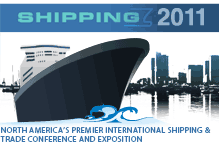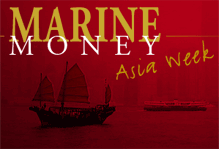
Making Something Out of Nothing – The Battle for Team Shipping
By Nicolai Heidenreich
After one of the shortest takeover battles in history, Arne Blystad and his advisors Nordea Securities announced last week that their offer to buy the entire shareholding from Team Shipping’s two largest shareholders, Mowinckel’s Rederi and Viken Shipping at NOK 97.50 had been accepted and now controlled 75% of the company.
In this quick piece we will give you a little background on Team Shipping to better explain what Vroon Shipping and Arne Blystad fought over and in addition to update you on the current status of the takeover.
Some Deals
are Best Left Undone
In December 1997, shareholders Mowinckel and Viken Shipping controlled by Tom Steckmest together with DnB Markets decided to take the 30-year-old family firm public. DnB Markets was able to put together a guarantee syndicate to cover the NOK 212 million IPO ($30 million in 1997 USD). The shares where sold at NOK 117 but started trading at NOK 100 in the second week of January 1998. Investors have never seen those levels again. Continue Reading
Of Budgeteers and Benchmarkers: Understanding Industry Operating Expenses
By Jens Alers, General Manager of Atlantic Marine LP (Bermuda)
Member of the Schulte Group
The great Phyllis Diller once said: “When I get to the beauty parlor I always go through the emergency entrance. Sometimes I just go for the estimate.”
Like so many of us, Ms Diller is terribly worried about her operating expenses. Yet there is no point in avoiding the subject.
Phyllis Diller, who will be 84 years young this year, is keeping in good shape, and was recently honored by the American Academy of Cosmetic Surgery for having the courage to publicly bring plastic surgery out of the closet.
We here at the Ship Finance Academy [Editor’s Note: This article is based on a speech given by Mr. Alers at MarineMoneyWeek at the Ship Finance Academy on 18th June 2001] shall endeavor to bring the secrets out of the slopchest cluttered with ignorance and misperceptions about what it takes to run a boat, so that they can be subjected to proper scrutiny.
Continue Reading
NEW U.S. TAX HURDLES FOR FOREIGN SHIPOWNERS
By Derick W. Betts, Jr., Seward & Kissel, LLP
Death and taxes – this is a combo that most can accept and understand. Lunch and taxes [Ed. Note: This has been excerpted from a luncheon speech made by Mr Derik Betts on June 20th 2001 during MarineMoneyWeek.] on the other hand is a different matter. It has all the ingredients to cause indigestion to all but the hard core tax enthusiasts. So I will try to be as light and breezy as I can – if any discussion of taxes can be light and breezy. The U.S. tax hurdles the proposed Section 883 regulations pose are the focus of this piece.
What does Section 883 exempt? Gross income derived from the international operation of ships. Simple in concept but as we shall see, fraught with nuances. Pay particular attention to the words “international” and “operation”.
What must a taxpayer do to qualify for the exemption? The taxpayer must be organized in a Qualified Foreign Country and satisfy one of three stock ownership tests: (i) more than 50% of its stock, in terms of value, must be beneficially owned by individuals who reside (and have their tax home) in a Qualified Foreign Country; (ii) its stock or that of its parent must be primarily and regularly traded on an established securities market located in the United States or in a Qualified Foreign Country; or (iii) it is a U.S. controlled foreign corporation – commonly called a CFC [A CFC is a non-U.S. country that grants to U.S. corporations a reciprocal tax exemption in respect of its shipping income.]
Continue Reading
From the Editor: Summer: MarineMoneyWeek to Rankings to Greece
The unofficial start to the summer in the United States is Memorial Day, a day which consolidates all US wartime commemorative holidays into one (not that anyone in the US should have too many holidays) and it is by rule the last Monday in May. The last Monday in May 2001 fell on the 28th and it was a busy time for Marine Money International. On the 30th of May we had our third annual Norwegian Ship Finance Forum in Oslo with more than 150 attendees discussing consolidation in the shipping industry and ship finance for the 21st century over the course pf the day.
Continue Reading
Marine Money Rankings 2000
By Urs Dür
Over the years Marine Money has ranked shipping company’s basis their performance over a year period. The intention behind ranking companies is not necessarily to chastise one company for a poor year and praise another for a great one, it is merely to provide a benchmark for the potential investor or banker from which to start analysis providing a backdrop from which to commence forming a judgment of the overall health and performance of a shipping company.
Congratulations to those at the top of the rankings, however those at the bottom of the noted league need not fret. To be ranked by Marine Money there were specific criteria. While we considered for rank over 120 companies, only 41 met the criteria.
Continue Reading
BARGAIN HUNTING IN OSLO: A SKAUGEN STORY
By Nicolai Heidenreich
For the public equity sector, second half of 2000 and most of 2001 have been filled with stories of the tanker sector. And why not? VLCCs earning $100,000 per day and three attempted IPOs of which two were successful is of course very sexy. With OPEC now threatening to lower production even further on the back of slowing demand the picture for the pure tanker companies are not so certain. Both Norwegian and American analysts have downgraded the many household names this last month and very few are ready to make any prediction how the rest of the year will look.
This will lead investors to look at different industries and one of the interesting industries we think will be followed in the short and long term is the gas sector. We have seen it with the ease which Golar LNG raised $280 million in a couple of days in Oslo in early June, and the increased rush for owners of both LNG & LPG vessels to the shipyards.
Continue Reading
TEEKAY EARNINGS, Amongst Other Things, BEAT STREET
By Urs Dür
Teekay posted net income of $ 96.2m or $2.35 per share on the 24th of July as Q2 earnings for 2001 compared with $46.7m and $1.19/share in the corresponding period last year. A portion of the increase must be attributed to the Ugland Nordic acquisition which was concluded earlier this year but still the numbers blew-away the “Street” consensus which was a mere $2.03. Jordan Alliger of Goldman Sachs, for example, had an estimate for Q2 on TK at $1.80/share and JP Morgan analysts Jill Evans and Jonathan Chappell had an estimate of $1.99. This significant “miss” in percentage terms by two large investment houses anecdotally shows that this industry remains notoriously tough to call even if it is a “deep cyclical”. The full earnings release is on www.teekay.com.
On the news, Lehman Brothers’ Dan Barcelo reiterated his Buy recommendation with EPS estimates on the shares, maintaining their EPS 2001 estimate, at $10.60.
Continue Reading
A PHOENIX FROM THE ASHES
Two years after Alpha Shipping
By Kevin Oates
Alpha Shipping was a short lived shipping company which saw success and despair within a period of about 18 months. The story received a lot of press, much of it negative, and much of it misguided. Alpha was made out to be a vehicle which manipulated capital markets and then benefitted, at the cost of others, to the tune of a reputed $30 million.
Every year or so this magazine publishes an article about George Economou (hereinafter”GE”). In 1996 it was “From Acorn to Oak Tree”, relaying the origins and growth of the Drytank SA, his then management company. In 1998 and 1999 there was a lot of coverage of Alpha Shipping and the bond issue and the subsequent restructuring. To note is the article published in Marine Money in January 1999 entitled “Playing Chicken with George.” This article analyses the “value” of the Alpha fleet to the bondholders and suggested an exit price that would be satisfactory to all parties. Rumour has it that the final restructure between CSFB and Alpha was based on the Marine Money analysis! In 2000 we published “Reflections of a High Yield Issuer.” This was the speech that GE made at the New York Marine Money conference of that year in which he enlightened us on his personal thoughts about the Alpha experience.
Continue Reading
THE HITCHHIKER’S GUIDE THE BULK CARRIER MARKET
By Michael J. Robson – Lalemant (USA) Inc.
When attempting to explain where the Bulk Carrier Market may be headed, it is often just as expedient to look to works of fiction (as paraphrased above from the sadly late Douglas Adams) than to pour over the myriad analyses, graphs, charts and pontifications available from sources around the galaxy. The entire shipping community is, as we all know, more secretive than the CIA, and more prone to fly in the face of conventional wisdom than any other business group anywhere. That said, the “raw” data of world fleet composition and the projections for the near future should give all a little pause to consider.
Hands up those who know how much the world shipping fleet is worth? Answer: $320.7bn. And what is the fleet’s new building replacement cost? Answer, $591.7bn. These are not statistics from the Guinness Book of Records. They are contained in “Global Shipping — An Investors’ Guide”, which has recently been published by UBS Warburg in an attempt to clarify our complex industry for newcomers. This is, in my opinion, a dangerous document. Continue Reading
U.S. Coastal RoPax – Not Here Yet, But Getting Close
By Geoff Uttmark
Maritime technological advancement is normally evolutionary. Ships grow larger, engine power-to-weight ratios increase, fuel rates decrease, navigation bridges and engine spaces automate, crew sizes shrink, all in an unending progression of productivity improvement. The pace of innovation is slow most of the time, but not all of the time. Recent notable instances of shipping metamorphosis include the container ship revolution, which sent brand new break bulk freighters back to the building yard for conversion, and development of VLCCs in response to closure of the Suez Canal in 1967 that displaced most 100,000 DWT “supertankers” from the Persian Gulf to less important oil trades.
Most recently of all, the ferry sector, which encompasses a very broad range of technologies from intra-harbor commuter foot ferries to some coastal and inter-island Ro/Ro ships, has witnessed more technological advancement in the past decade than the prior century. Cruise ferry and RoPax developments are both the most interesting and the most challenging to forecast in this sector since they are by definition hybrid services accommodating three constituencies: Continue Reading







